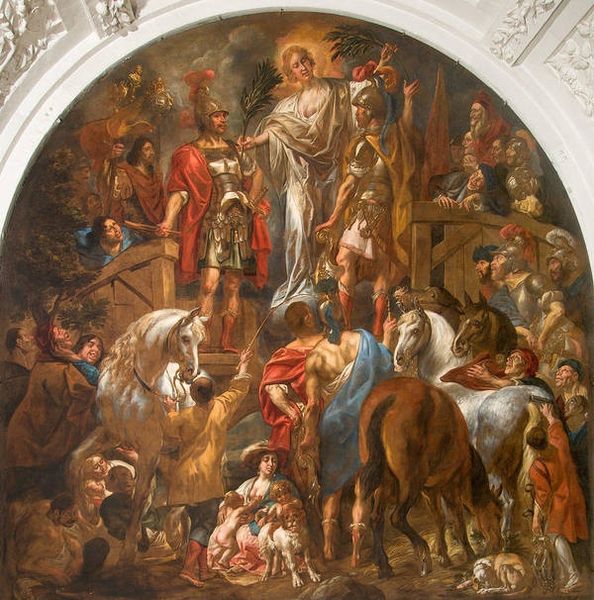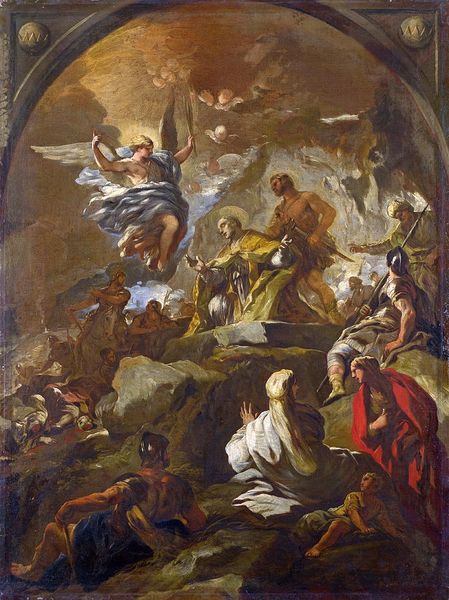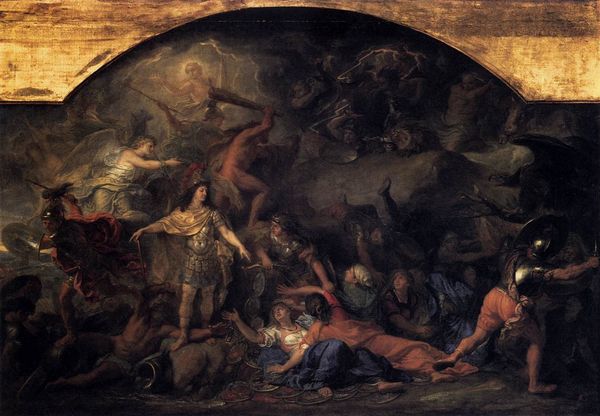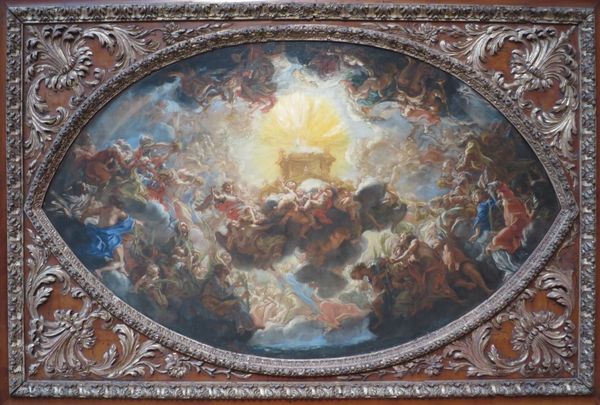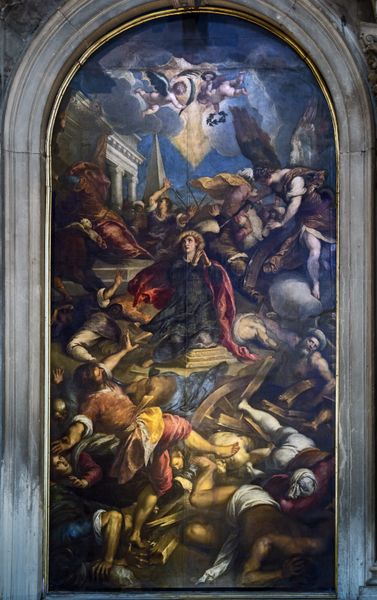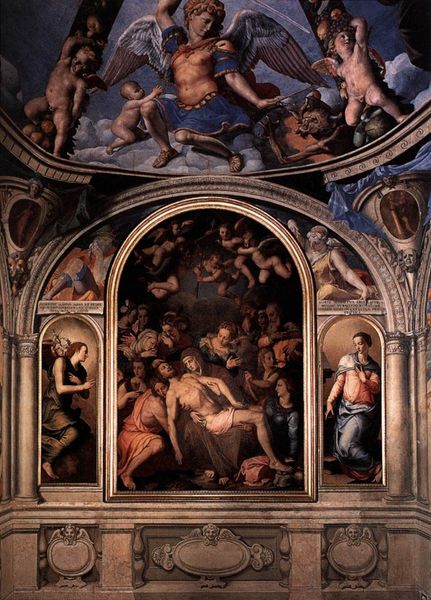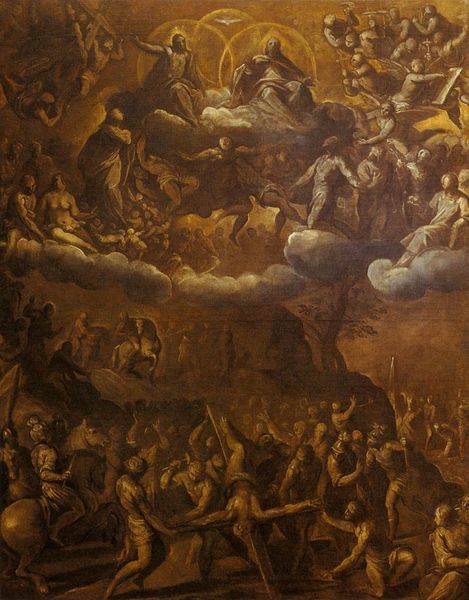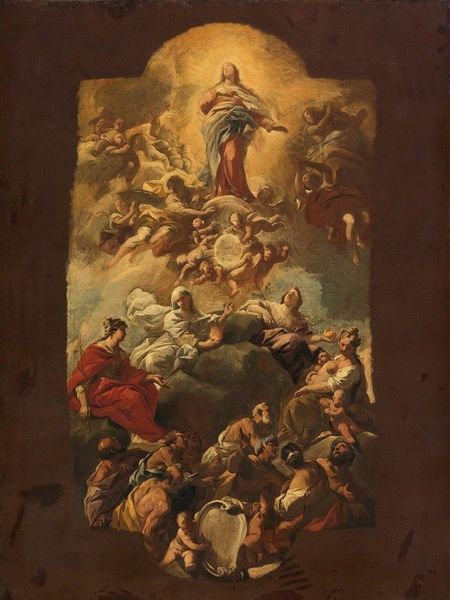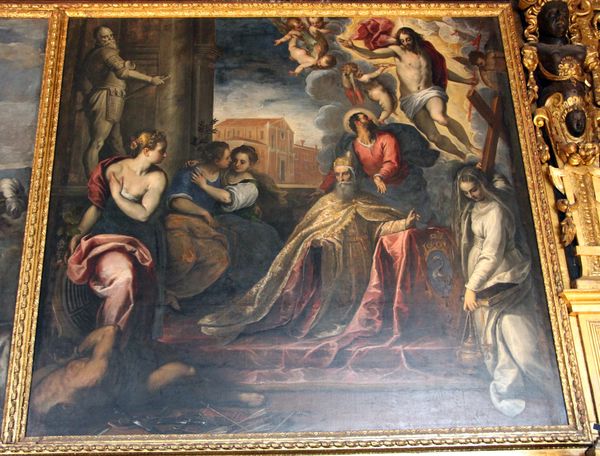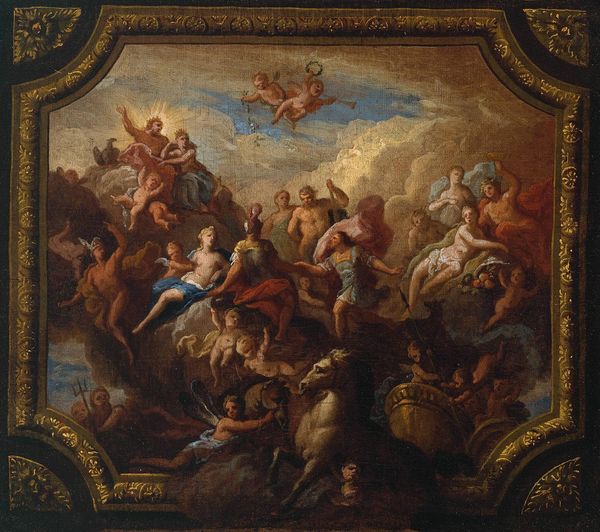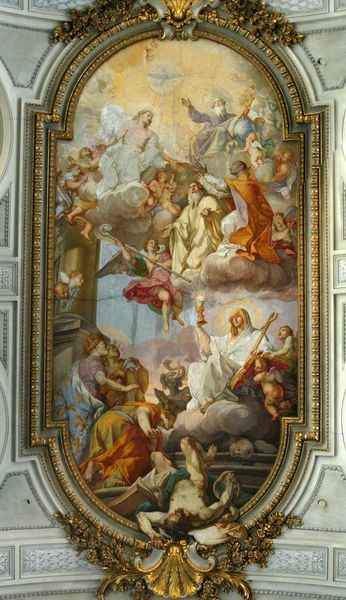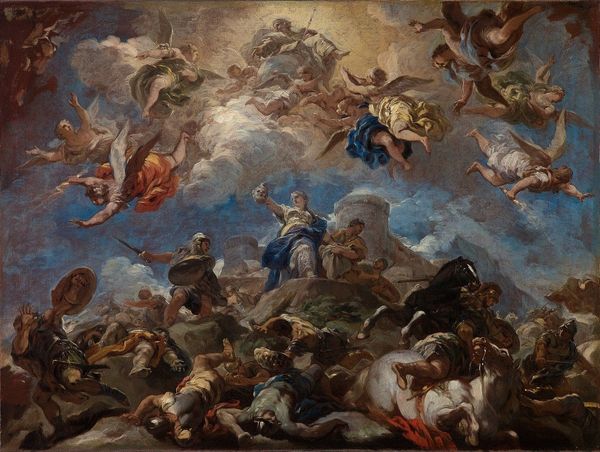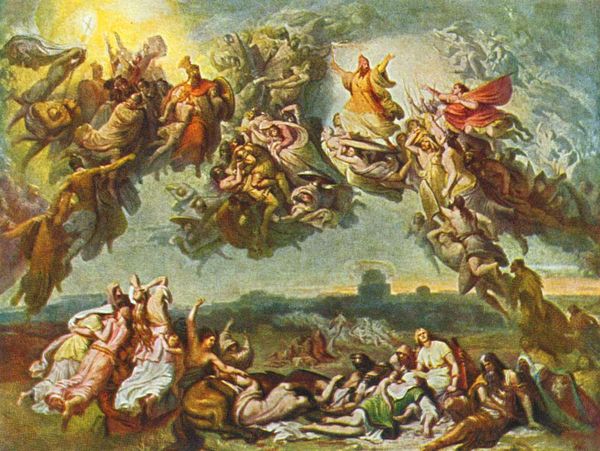
oil-paint
#
baroque
#
oil-paint
#
figuration
#
oil painting
#
history-painting
Copyright: Public domain
Curator: Jordaens' "A Roman Camp Under Attack by Night" is an absolute whirlwind, isn't it? A maelstrom of figures rendered in oil paint, seemingly without beginning or end. What grabs you most when you first look at it? Editor: It’s so chaotic! The sheer number of figures clashing under the moonlight creates a sense of intense struggle and unrest. I'm interested in understanding it further; what’s your interpretation of this dramatic piece? Curator: Well, from my perspective, it’s crucial to consider the materiality. Look at how Jordaens manipulates the oil paint. Thick impasto in the highlights creates a tangible sense of form, of bodies wrestling, and of the struggle to survive. How does the handling of the material itself contribute to the narrative being constructed? Editor: It’s fascinating how you draw attention to the texture and physicality of the paint itself! I hadn’t thought about how that impacts the storytelling. So, it's not just what's depicted, but *how* it's depicted through the material that adds layers of meaning? Curator: Precisely! Think about the socioeconomic conditions in which Jordaens worked. As a successful painter in Antwerp, he was part of a network of workshops and trade. The pigments, the canvas, the very act of commissioning such a large-scale history painting speak to specific modes of production and consumption. Don't you find it intriguing to see a narrative of warfare being articulated via the very channels of globalised material supply? Editor: I hadn't considered that before! Thinking about the pigments as a commodity, and the canvas as a product of its time really opens up a whole new way of understanding the painting. Thank you for sharing your insight. Curator: And thank you for posing such thoughtful questions! I love seeing art through someone else's eyes!
Comments
No comments
Be the first to comment and join the conversation on the ultimate creative platform.
